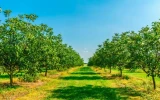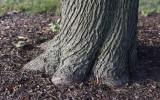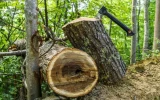How Long Do Walnut Trees Live? (English & Black)
Walnut trees are known for their impressive lifespan, which can vary depending on the species and growing conditions. Typically, these trees are known to survive for several hundred years, making them one of the longest-lived trees in the world. In this article, we'll explore the lifespans of two popular species of walnut trees: the English and black walnut trees.
English walnut trees have an average lifespan of about 150–200 years, while black walnut trees have an average lifespan of about 120–250 years. This means that black walnut trees are capable of living much longer than English walnut trees under favorable conditions.
The lifespan of walnut trees can be influenced by factors such as genetic differences, the climate where the trees are grown, soil quality, and water availability. Let's take a closer look at how each of these affects how long these trees live.
The English and Black varieties provide varying lifespans, which can have a direct impact on production and long-term planning. When starting a walnut farm from scratch, it is important to take into account the lifespan of the trees.
Summary
- The higher level of genetic diversity in black walnut trees can improve their chances of survival and adaptability to different environmental conditions, which can ultimately impact their lifespan.
- Both species prefer clean, fresh water that is free from contaminants, but black walnut trees are more drought-tolerant than English walnut trees.
- English walnut trees prefer well-drained, fertile soil that is rich in organic matter, while black walnut trees are more tolerant of a wider range of soil types.
- Walnut trees that are left untreated for pests and diseases are more likely to have reduced nut yield, weakness, defoliation, and other problems that can shorten their lifespan.
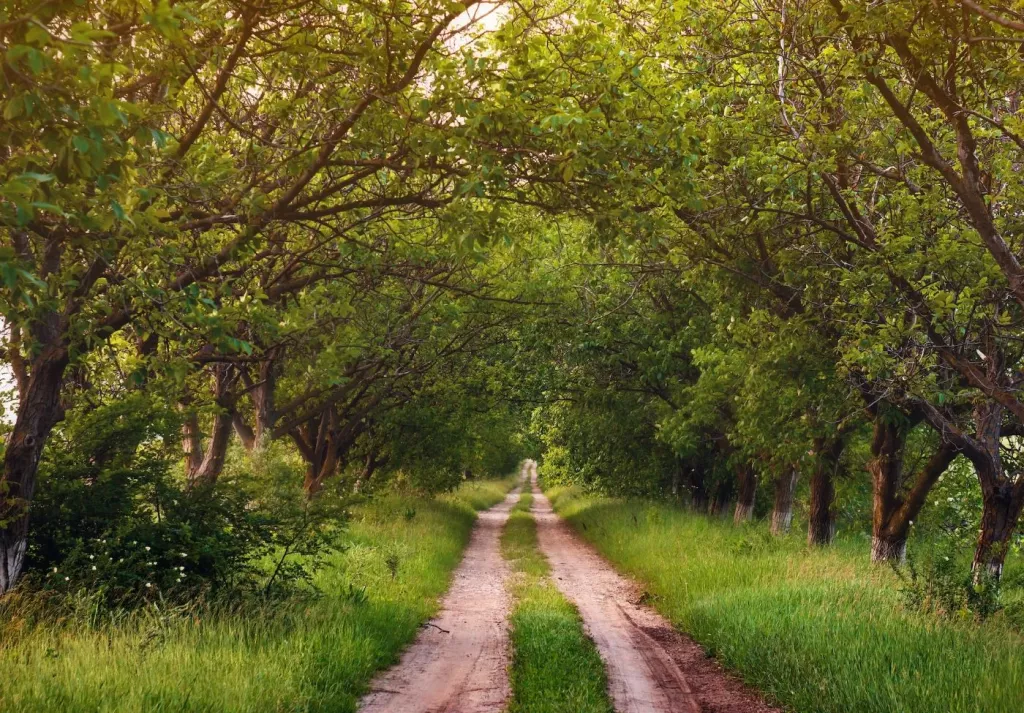
On this page:
Lifespan of a Walnut Tree
Walnut trees are known for their longevity and can live for several generations. The lifespan of walnut trees can vary depending on the species and growing conditions.
English walnut trees and black walnut trees are the two most common types of walnut trees, and their lifespan can differ as stated in the table below:
| Walnut Species | Average Lifespan |
|---|---|
| Black walnut | 120-250 years |
| English walnut | 150-200 years |
English walnut trees have an average lifespan of about 150-200 years, while black walnut trees have an average lifespan of about 120-250 years.
This means that black walnut trees are capable of living much longer than English walnut trees under favorable conditions. A 100-year old black walnut tree can be worth around $5,000 to $55,000 or more.
One of the reasons for the longer lifespan of black walnut trees is their ability to thrive in a wider range of environmental conditions. They can grow in a variety of soils and tolerate both drought and flooding.
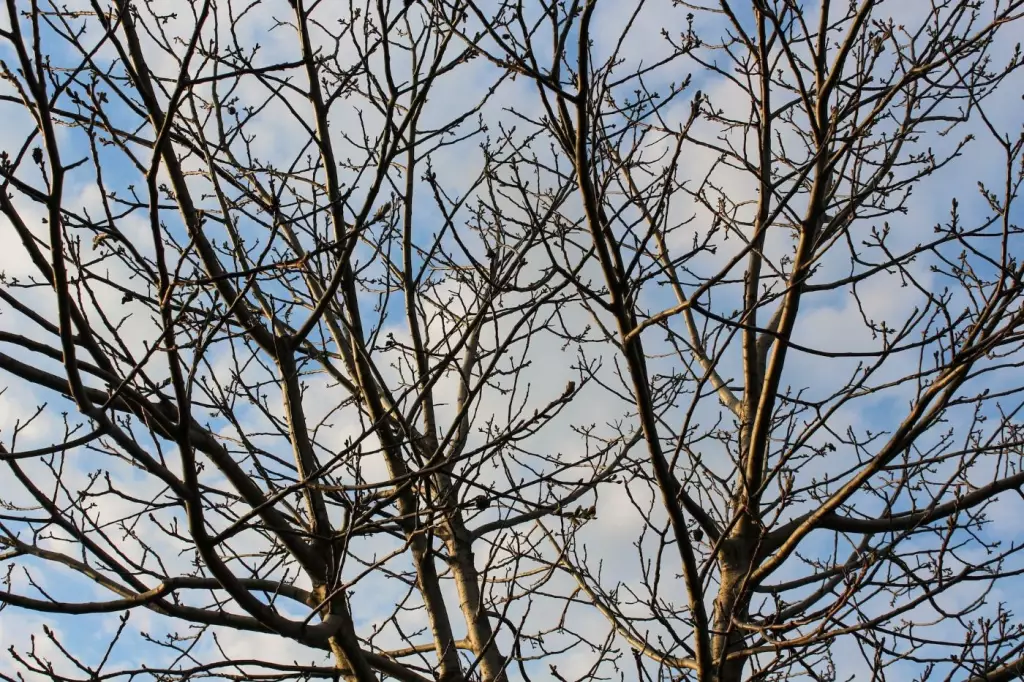
In contrast, English walnut trees require well-drained soil to thrive and are more susceptible to disease and pests. Black walnut trees only reach maturity at 25 years of age, but they can start producing nuts at age 7 - 15.
Another factor that can influence the lifespan of walnut trees is the quality of care they receive. Proper pruning, fertilization, and pest management can help extend the life of a walnut tree.
Additionally, planting a walnut tree in a location that provides adequate sunlight and space for growth can also help ensure a longer lifespan.
Factors That Influence the Lifespan of Walnut Trees
Several factors can influence the lifespan of walnut trees. Some of the main factors include:
| Factors Affecting Lifespan | English Walnut Trees | Black Walnut Trees |
|---|---|---|
| Genetic Differences | Self-compatible, less diversity | Self-incompatible, higher diversity |
| Soil and Nutrient Quality | Prefer fertile soil, high nitrogen, and potassium | Tolerant of varied soil types, higher calcium, lower nitrogen, and potassium |
| Water Availability and Quality | Prefer moist soil, sensitive to salt and juglone | Prefer clean water, more drought-tolerant, sensitive to salt and juglone |
| Climate | Adapted to mild climates, sensitive to harsh conditions | Adapted to a wider range of climates, sensitive to spring frost damage |
Genetic differences
Like all living organisms, the lifespan of a walnut tree is partly determined by its genetics. English walnut trees (Juglans regia) are diploid, meaning they have two sets of chromosomes in each cell.
They have a haploid chromosome number of 16, which means they have 32 chromosomes in total. English walnut trees are also self-compatible, which means they can pollinate themselves and produce viable offspring.
Black walnut trees (Juglans nigra), on the other hand, are also diploid with a haploid chromosome number of 16, but they have a different genetic makeup than English walnut trees.
Black walnut trees are self-incompatible, which means they cannot pollinate themselves and require cross-pollination from another tree to produce viable offspring.
Additionally, black walnut trees have a higher level of genetic diversity than English walnut trees. This is because black walnut trees have a wider range of natural habitats, which has allowed for greater genetic variation to occur.
Soil and nutrient quality
Trees that are grown in nutrient-rich soil with good drainage and aeration are more likely to live longer than those grown in poor-quality soil. Nutrient deficiencies can also impact the tree's growth and longevity.
English walnut trees prefer well-drained, fertile soil that is rich in organic matter. They are not very tolerant of poorly drained soils or soils with high salinity levels. They are known as one of the fastest-growing walnut species if the soil conditions are favorable.
English walnut trees also require regular fertilization to maintain their growth and health. They have a relatively high demand for nitrogen and potassium, and may also require additional micronutrients such as zinc and boron.
Black walnut trees, on the other hand, are more tolerant of a wider range of soil types. They can grow in well-drained or poorly-drained soils and are even able to grow in soils with high clay content.
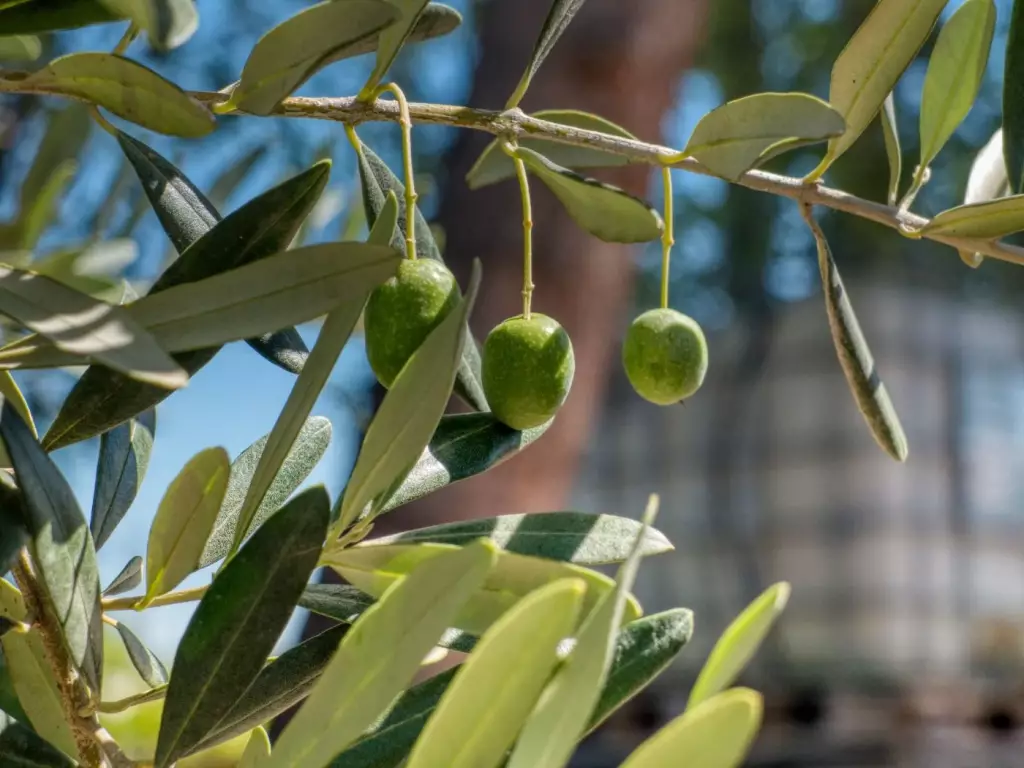
However, black walnut trees are sensitive to juglone, a chemical compound that is produced by the tree's roots and leaves. This means that other plants may have difficulty growing near black walnut trees due to the presence of juglone in the soil.
In terms of nutrient requirements, black walnut trees have a higher demand for calcium than English walnut trees. They also have a lower demand for nitrogen and potassium but may require additional micronutrients such as manganese and iron.
Water availability and quality
Trees that are regularly watered and not subjected to drought stress are more likely to live longer. However, overwatering can also be detrimental to the tree's health and lifespan.
Both English walnut and black walnut trees require regular watering, particularly during their first few years of growth. They prefer well-drained soils that are moist but not waterlogged.
However, overwatering can be detrimental to both species, as it can lead to root rot and other diseases.
In terms of water quality, both species prefer clean, fresh water that is free from contaminants. They are sensitive to high levels of salt in the soil or water, which can cause leaf burn and other damage.
Additionally, black walnut trees are sensitive to juglone, a chemical compound that is produced by their roots and leaves. This can make it difficult for other plants to grow near black walnut trees, as the juglone can leach into the soil and affect the water quality.
One difference between the two species is their drought tolerance. English walnut trees are more sensitive to drought stress than black walnut trees, and require more consistent watering to maintain their health and longevity.
Black walnut trees are more tolerant of drought conditions and can survive periods of low water availability.
The climate in which the tree is grown
Trees that are grown in areas with harsh winters or hot, dry summers may be more susceptible to damage and stress, which can impact their lifespan.
English walnut trees are native to the Mediterranean region and are well adapted to mild, temperate climates with cool winters and warm summers.
They are not well adapted to areas with harsh winters or hot, dry summers, as these conditions can damage the tree and impact its lifespan. They are also sensitive to late spring frosts, which can damage the flowers and reduce the tree's fruit production.
Black walnut trees, on the other hand, are native to eastern North America and are well adapted to a wider range of climates.
They can tolerate colder winters and hotter summers than English walnut trees and are also more drought-tolerant. However, black walnut trees are sensitive to frost damage in the spring, which can impact their fruit production.
Signs of Aging and Decline in Walnut Trees
As walnut trees age, they may exhibit various signs of decline that can affect their health and productivity such as the following:
Reduced growth
As walnut trees age, their growth may slow down or become stunted. This means that the tree may not grow as tall or as wide as it once did, and its branches may become weaker and more prone to breaking.
One reason why this may happen is due to nutrient deficiencies, which can occur when the tree is not getting enough of the essential nutrients it needs to grow and thrive. This can happen if the soil is depleted or if the tree is not receiving enough water.
Pest infestations can also cause reduced growth in walnut trees, as insects and other pests can damage the tree's leaves, bark, and roots, making it more difficult for the tree to grow and produce fruit.
Disease can also be a factor in reduced growth, as diseases like root rot and canker can weaken the tree and make it more susceptible to damage from pests and other environmental factors.
Thinning canopy
As walnut trees age, their canopy may begin to thin out which means that the leaves and branches may become less dense, and the overall appearance of the tree may become less full.
There are several reasons why this may happen, including stress, disease, or pest infestations. Stress can occur when the tree is not getting enough water or nutrients, or if it is exposed to harsh environmental conditions.
The disease can also be a factor in thinning canopies, as diseases like blight and canker can cause the tree's leaves and branches to die off.
Finally, pest infestations can also cause thinning canopies, as insects and other pests can damage the tree's leaves and bark, making it more difficult for the tree to produce new growth.
Dead or dying branches
Aging English walnut trees may begin to develop dead or dying branches. Similarly, Black Walnut trees can also develop dead or dying branches as they age.

This can be caused by a variety of factors, including disease, pest infestation, or physical damage. In both cases, it is important to identify the cause of the problem and take appropriate action to prevent further damage to the tree.
In some cases, dead or dying branches can be pruned away to improve the overall health of the tree. However, you might need to do this carefully and with the proper tools to avoid causing further damage.
Additionally, if the problem is caused by a disease or pest infestation, it may be necessary to treat the tree with pesticides or other treatments to prevent further damage.
Regular tree maintenance, including pruning and fertilization, can help prevent dead or dying branches from developing in the first place. Perhaps monitor the tree for signs of disease or pest infestation and take appropriate action as soon as possible to prevent further damage.
Bark damage
As English walnut trees age, their bark may become damaged or cracked. This can be due to environmental stressors, such as extreme temperatures drought, or due to pest infestations.
Reduced nut yield
As walnut trees age, their nut yield may begin to decline. This can be caused by a range of factors, such as a lack of essential nutrients, pest attacks, or disease.
Nutrient deficiencies can occur due to soil depletion, which can happen over time as the tree extracts nutrients from the soil to support its growth.
Pest infestations can also impact nut production, as insects and other pests can damage the tree's leaves, flowers, and nuts.
Finally, diseases can also cause a decline in nut yield, as they can weaken the tree and make it more susceptible to other stressors.
Yellowing leaves
As walnut trees age, their leaves may begin to turn yellow or brown. For black walnut trees, yellowing leaves can be a sign of a fungal disease called Thousand Cankers Disease.
This disease is caused by a combination of a fungus and a beetle that attacks the tree's bark, causing small cankers to form. These cankers eventually merge, cutting off the flow of nutrients and water to the leaves, causing them to yellow and die.
Another possible cause of yellowing leaves in black walnut trees is a nutrient deficiency, particularly nitrogen. This can be remedied by adding fertilizer to the soil around the tree.
For English walnut trees, yellowing leaves can also be a sign of nutrient deficiencies, particularly iron or manganese. This can be remedied by applying a foliar spray of a chelated iron or manganese solution.
It may also be due to a pest infestation, particularly by the walnut aphid. These pests suck the sap from the leaves, causing them to yellow and wilt. In this case, insecticidal soap or neem oil can be used to control the infestation.
Diseases and Pests That Shorten the Lifespan of Walnut Trees
The table below summarizes the common diseases and pests that affect certain parts of walnut trees, which, if left untreated, may shorten their lifespan:
| Disease/Pests of Walnut Trees | Affected Parts | Effects |
|---|---|---|
| Walnut blight | Leaves, Twigs, Nuts | Defoliation, reduced nut yield, weakness |
| Walnut husk fly | Developing Nuts | Premature nut drop, reduced nut yield, weakness |
| Walnut twig beetle | Twigs, Branches | Damage, weakness, spread of Thousand Cankers Disease |
| Crown gall | Roots, Lower Trunk | Swelling, discoloration, weakness, reduced nut yield |
| Phytophthora root rot | Roots | Rot, weakness, reduced nut yield |
| Walnut caterpillar | Leaves | Defoliation, weakness, reduced nut yield |
| Walnut scale | Sap | Weakness, reduced nut yield |
Trees that are regularly treated for pests and diseases are more likely to live longer than those that are not. Some common pests and diseases that can impact walnut trees include walnut blight, walnut husk fly, and walnut twig beetle.
Aside from those mentioned, walnut trees are also prone to fungal growth. In English walnut trees, fungal growth can be caused by a variety of factors, including high humidity, poor air circulation, and insect damage.
One common fungal disease that affects English walnut trees is anthracnose, which causes dark spots on the leaves and can lead to defoliation.
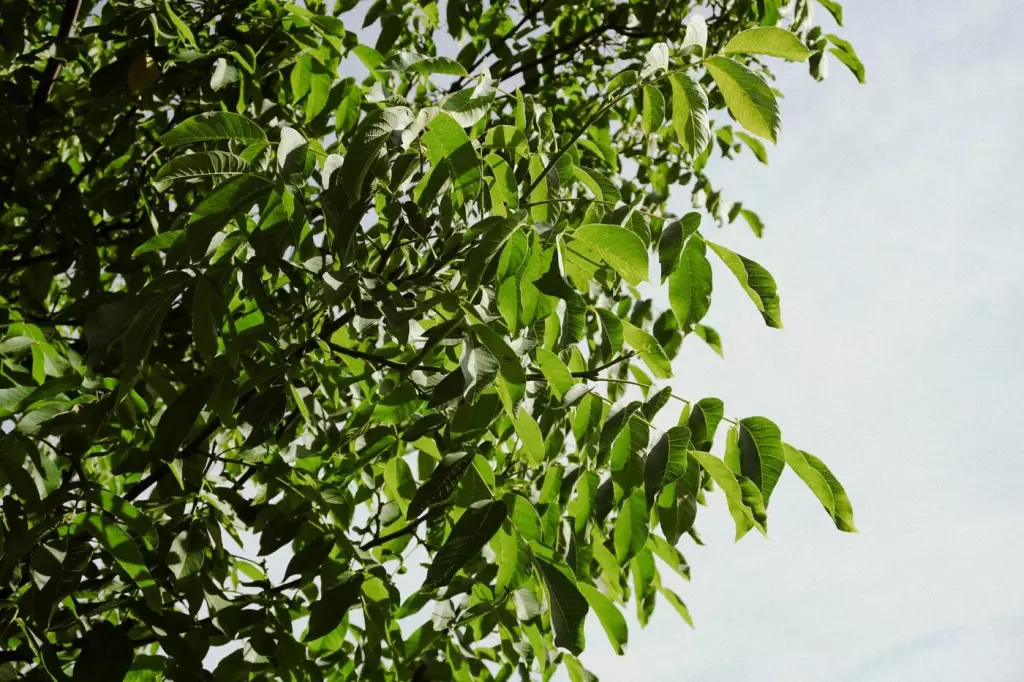
Another fungal disease that can affect English walnut trees is powdery mildew, which causes a white powdery coating on the leaves and can also lead to defoliation.
In black walnut trees, the most common fungal disease is called thousand cankers disease, which is caused by a fungus that is spread by a type of bark beetle.
This disease causes small cankers to form on the branches and trunk of the tree, which can eventually lead to the death of the tree. Another fungal disease that can affect black walnut trees is walnut blight, which causes black spots on the leaves and can lead to defoliation.
Revitalizing and Extending the Lifespan of Aging English Walnut Trees
Pruning helps maintain the health of aging walnut trees
Regular pruning can help to remove dead or diseased branches, improve airflow and sunlight penetration, and promote healthy growth.
It involves removing dead or diseased branches, improving airflow and sunlight penetration, and promoting healthy growth. This helps to prevent the tree from becoming overgrown and to maintain its shape and structure.
Fertilization helps provide additional nutrients
Aging English walnut trees may require additional nutrients to maintain their health and vitality. Fertilization can help to provide these nutrients and improve the tree's overall health and vitality, and promote healthy growth.
Practice proper irrigation
Trees that are not receiving enough water may be more susceptible to stress and disease, which can impact their lifespan. Irrigation refers to the process of artificially supplying water to plants or crops, typically through the use of a system of pipes, sprinklers, or other watering devices.
In the case of aging walnut trees, proper irrigation is particularly important for maintaining their health and longevity. Without adequate water, these trees may become stressed and more susceptible to disease, which can ultimately impact their lifespan.
Therefore, you may need to ensure that your walnut trees receive sufficient water through a well-designed and properly maintained irrigation system.
This may involve monitoring soil moisture levels, adjusting watering schedules based on weather conditions, and ensuring that water is distributed evenly throughout the root zone of the trees.
In planning your walnut orchard, understanding the lifespan of walnut trees and the average pounds of walnuts produced per tree is crucial, as it helps you anticipate the long-term yield and lifecycle of your investment.
Pest and disease control can also help aging walnut trees
Trees that are infested with pests or diseases may be more likely to experience reduced growth and lifespan, so it's best to address these issues promptly.
You will need to regularly inspect your trees for signs of pests and diseases, such as holes in the leaves, discoloration, or wilting. Using organic and natural methods of pest and disease control whenever possible, such as introducing beneficial insects or using neem oil, can also be helpful.
If chemical treatments are necessary, use them sparingly and in accordance with the instructions on the label.
Additionally, removing any dead or diseased branches promptly to prevent the spread of disease, practicing good sanitation by removing fallen leaves, fruit, and other debris from around the base of the tree, and providing adequate care and maintenance can help keep your walnut trees healthy and productive for many years to come.
Soil management is an important part of maintaining the health of aging walnut trees
Soil that is compacted or lacking in nutrients can impact the tree's growth and lifespan. Soil testing and amendments can help to improve soil quality and promote healthy growth.
